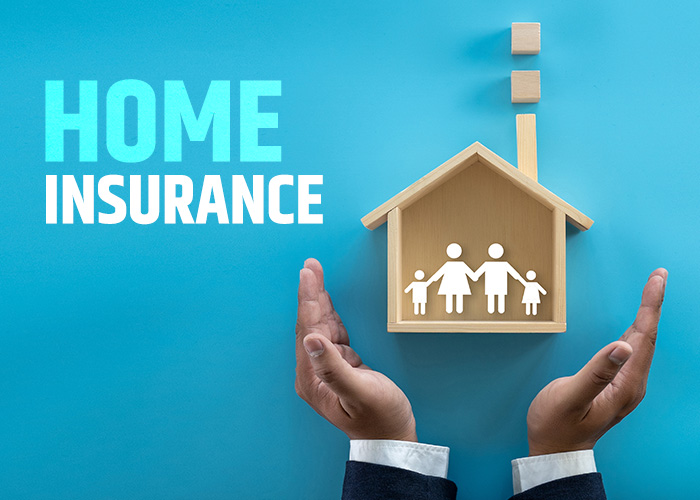Home insurance is a vital financial safeguard that protects homeowners against damages and losses to their property and belongings. It provides coverage for various risks, including fire, theft, natural disasters, and liability for accidents that occur on the property.
Why is Home Insurance Important?
A home is often the most valuable asset an individual owns. Having home insurance ensures that you are financially protected in the event of unexpected damages. Without adequate insurance, homeowners may have to bear the full cost of repairs or replacements, which can be financially devastating.
Types of Home Insurance Policies
1. Standard Homeowners Insurance (HO-3)
This is the most common type of home insurance and covers both the structure of the home and personal property within it. It also includes liability coverage for accidents that may occur on the property.
2. Comprehensive Home Insurance (HO-5)
This policy offers broader coverage, protecting against all perils except those explicitly excluded. It typically includes higher coverage limits for personal property.
3. Condo Insurance (HO-6)
Designed specifically for condominium owners, this policy covers the interior of the unit and personal belongings, while the building structure is usually covered by the condo association’s master policy.
4. Renters Insurance (HO-4)
Although not for homeowners, renters insurance is essential for tenants as it protects personal belongings against theft, fire, and other risks.
5. Landlord Insurance
If you rent out a property, this insurance covers damages to the building and liability protection in case tenants or visitors are injured on the premises.
What Does Home Insurance Cover?

1. Dwelling Coverage
Protects the structure of your home, including walls, roof, floors, and built-in appliances, against perils such as fire, hail, and vandalism.
2. Personal Property Coverage
Covers your belongings, such as furniture, electronics, and clothing, against damage or theft.
3. Liability Protection
Provides financial protection in case someone is injured on your property and you are found legally responsible.
4. Additional Living Expenses (ALE)
Covers temporary housing and living expenses if your home becomes uninhabitable due to a covered peril.
Factors That Affect Home Insurance Costs
1. Location of the Home
Homes in areas prone to natural disasters or high crime rates often have higher insurance premiums.
2. Home’s Age and Construction
Older homes or those built with materials that are difficult to replace may have higher premiums.
3. Coverage Limits
The more coverage you choose, the higher your premium will be.
4. Deductibles
A higher deductible lowers your premium, but you’ll pay more out-of-pocket in the event of a claim.
5. Credit Score
Insurers may use your credit history to determine your premium. A higher credit score can lead to lower costs.
How to Choose the Best Home Insurance Policy
1. Assess Your Coverage Needs
Evaluate the value of your home and belongings to determine the right coverage amount.
2. Compare Multiple Providers
Get quotes from different insurance companies to find the best policy for your needs.
3. Understand Policy Exclusions
Read the fine print to know what’s not covered. You may need additional coverage for floods, earthquakes, or high-value items.
4. Check Customer Reviews and Ratings
Look for insurers with strong financial ratings and positive customer feedback.
Ways to Lower Your Home Insurance Premium
1. Bundle Insurance Policies
Combining home and auto insurance with the same provider often leads to discounts.
2. Improve Home Security
Installing security systems, smoke detectors, and deadbolts can reduce insurance costs.
3. Increase Your Deductible
Opting for a higher deductible can lower your premium, but make sure you can afford the out-of-pocket cost if needed.
4. Maintain a Good Credit Score
A strong credit history can help you secure lower premiums.
5. Ask About Discounts
Many insurers offer discounts for new homes, loyal customers, and homes with protective features.
Common Home Insurance Claims
1. Water Damage
Leaks and burst pipes are among the most frequent claims, making regular maintenance crucial.
2. Fire and Smoke Damage
Fires can cause extensive destruction, so it’s essential to have sufficient coverage.
3. Theft and Vandalism
Home burglaries and vandalism claims are common, especially in high-crime areas.
4. Wind and Hail Damage
Storms can damage roofs, windows, and siding, leading to expensive repairs.
5. Liability Claims
If a guest gets injured on your property, liability coverage ensures you are financially protected.
How to File a Home Insurance Claim
- Document the Damage: Take photos and videos of the affected areas.
- Notify Your Insurer: Contact your insurance provider as soon as possible.
- Complete Claim Forms: Fill out the necessary paperwork with detailed information.
- Meet with the Adjuster: The insurance company will send an adjuster to assess the damage.
- Receive Payment: If approved, you’ll receive compensation to cover repairs or replacements.
Final Thoughts
Home insurance is a crucial investment that provides financial security and peace of mind. By understanding your coverage options, comparing policies, and taking steps to lower premiums, you can ensure that your home and belongings are well protected.
